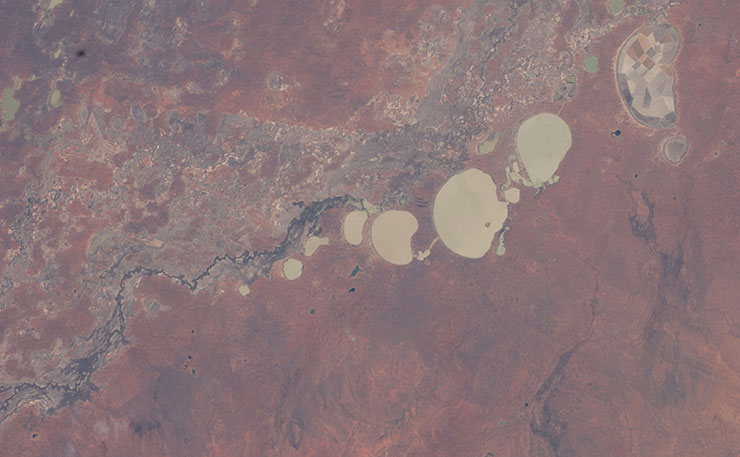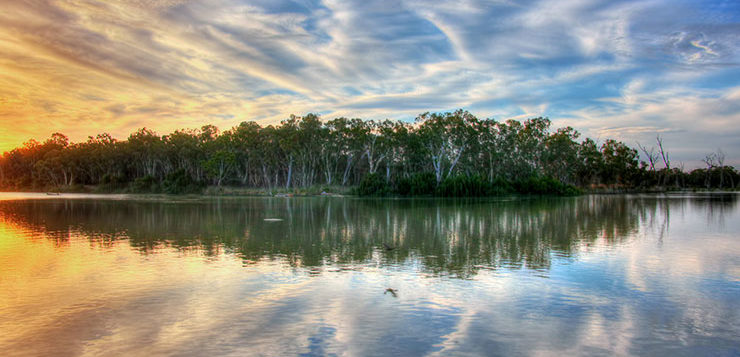So South Australians, you’re pee-ed off about New South Wales and Queensland stealing all your water upstream? Solution, with a bit of biblical fish and loaves magic, we just change the numbers. Maryanne Slattery explains.
Last Wednesday was Judgement Day for the management of the Murray-Darling Basin. It was a win for the river – to the tune of 70 billion litres of water, but it was a stunning rebuke for state and federal governments as well as the Murray-Darling Basin Authority.
Federal, NSW and Victorian Governments threatened fire, brimstone and the End of Days – or at least the end of the Basin Plan – if the Senate didn’t approve the Murray-Darling Basin Authority’s (MDBA) plans to let corporate irrigators in NSW and Queensland use more water at the expense of downstream uses, outlined in its Northern Basin Review.
Like the Bible, many people talk about the Northern Basin Review, but very few have actually read it. If last week’s outraged politicians and lobbyists had actually studied the amendment, they might have seen the Senate’s rejection coming.
The Senate saw that there were huge problems with transparency and the standard of analysis in the Review. While the reporting of the Senate’s rejection has focused on the proposal to reduce water for the environment, critics of the Review have long focused on problems in its methodology, process and claims of political interference.
The Northern Basin Review was finalised in 2016 after four years of science and socio-economic analysis. It recommended allowing irrigators to take from northern rivers 70 gigalitres more than in the original Plan. Of course, 70 gigalitres more for irrigation in northern NSW and Queensland means less water for the environment and people in places like Broken Hill and South Australia.
But how much less? Evaporation, seepage and other uses mean the extra volume is reduced along the way.

After four years of study, and just two weeks before the Northern Basin Review was released, the MDBA estimated 70 gigalitres more for northern irrigators meant 35 less for the Menindee Lakes near Broken Hill and 20 less for South Australia. This infuriated the South Australian water minister who rejected such an impact on his state.
So, the MDBA changed the numbers. Over the following few weeks its assessment of the impact on South Australia changed five times, each time revising down the impact on South Australia. The latest estimate is that South Australia will lose just 4 gigalitres – a number the MDBA and its minister hope the SA public and government might be willing to accept.
But the better result for South Australia is based on a loaves-and-fishes approach to hydrological modelling rather than actually changing anything upstream. The MDBA says it ran multiple modelling scenarios and simply chose different scenarios, with the lower impacts on South Australia.
Short of a miracle, for SA to get its water, it needs not just favourable selection of modelling results, but actual changes to upstream management.
The MDBA refuses to provide details on why and how it changed the numbers. The Senate requested all correspondence relating to these changes to examine the MDBA’s reasoning. Incredibly, senators were told that there was zero correspondence on the entire Northern Basin Review for the period when the changes were made.
To be clear, the Senate was asked to believe that after four years, the MDBA undertook new modelling scenarios and changed the numbers at the last minute, without any internal or external correspondence, and without referring the changes to its Board – who are actually responsible for the recommendation.

It gets worse. The amendment the Senate was asked to vote on included a provision for the states and the MDBA to change water extraction limits between valleys. These changes could be made without any new science, without any socio-economic analysis and outside the parliamentary process. Despite the significance of this provision, it was not included in the draft amendment available for public consultation.
Yet another problem for the Senate was a provision on groundwater, the most poorly understood part of the water cycle. Rather than assessing groundwater users’ compliance with legal limits on an annual basis, the MDBA’s proposal was to use a 10-year rolling average.
This has huge implications for areas where there are coal mines and coal seam gas (CSG) projects. While agricultural use of groundwater is relatively sustainable, mining CSG can require the dewatering of aquifers to access the gas. That is, coal seam gas requires access to groundwater that exceeds sustainable extractions. This amendment would seem to facilitate this, taking a leap of faith that the permanent depletion of an aquifer would not occur.
This is not an exhaustive list of problems with the Northern Basin Review and the reasons the Senate was right to reject it. Far from destroying the Basin Plan, the Senate has given the MDBA and the government time to fix these flaws.
The Murray-Darling Basin Plan always included parliamentary oversight of the MDBA and the last week has shown how important parliament’s role is. Some commentary has referred to the MDBA as the “independent umpire” of river management, but the Northern Basin Review has shown that the MDBA isn’t the messiah, in fact it can be a very naughty agency.
Donate To New Matilda
New Matilda is a small, independent media outlet. We survive through reader contributions, and never losing a lawsuit. If you got something from this article, giving something back helps us to continue speaking truth to power. Every little bit counts.




